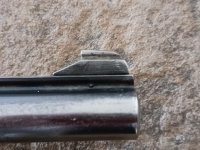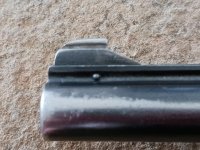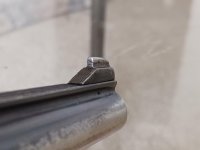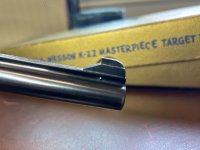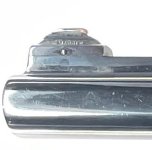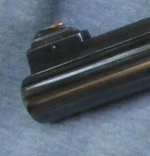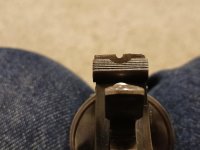Gun Relics, your ramp looks just like mine. To me your post is much more squared off, while mine is rounded.
Ralph, I was thinking that my sight if not modified, was made by someone besides S&W. In that case it would not be in Neal's article.
Actually it would be in Neal's article, just as Paine, Lyman, Marble, and Sheard are in the article. S&W used sights of their design, and several others on order. My last M&P Target arrived (and lettered) with a Marble Ivory Bead.
Bottom Line: They aimed to please!
Ralph Tremaine
My biggest problem/clue is the age of your gun----mid 20th century.
S&W used what I'll call vendor's sights rather freely up to WWII----not so much after---if any. Now I say "if any" out of ignorance because of my collection---targets from the beginning (NM#3's to the end of the "5 screws"). My dim recollection is the 357's could be had with pretty much any sight from the beginning right on. My recollection is dim because while the 357's of the time were certainly target grade guns, no one in their right mind would've selected one to use in competition. Accordingly, I had none of them and no significant knowledge of them (except for an RM simply because of their very important place/role in the history of the company). Specifically, I contend S&W would've been long gone by the end of the depression if not for the 357 Magnum---and its favorable effect on the rest of the product line.
AND, as an aside, I also contend the success of the RM program can likely be attributed more to the cartridge than to the gun. It's the ultimate of the time as the "Mine's bigger than yours" syndrome which likely started with our Cave Man ancestors and their clubs.
Speaking of "Mine's bigger than yours", my very first RM was an 8 3/4" monster ordered by the President of some public utility in Duluth, Minnesota----had it sighted in at 100 yards with Magnum ammo. Now that's all well and good, aside from the fact the gun gave every appearance of being brand new----and never fired since it left the factory-----the ultimate "sock drawer" gun!






